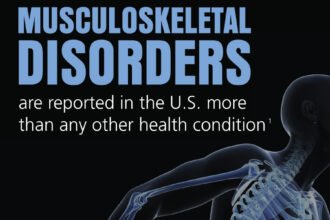Words, headline, bullets, script, dialogue, text, key words.
Sound familiar?
These are the fundamental elements of interaction. Furthermore, they establish the very essence of human communication. But wait a second. Are they really?
Words, headline, bullets, script, dialogue, text, key words.
Sound familiar?
These are the fundamental elements of interaction. Furthermore, they establish the very essence of human communication. But wait a second. Are they really?
Malclom Gladwell knows. In his “modern classic” BLINK, he points out how visceral or gut feelings can drive our opinions and decisions. And these decisions live “benieth the surface” of our conciousness. They lurk in our minds–twisting and turning primal thoughts, fears and desires only to emerge on their own and inexplicable terms. And in his words:
[Blink] is about rapid cognition, about the kind of thinking that happens in a blink of an eye. When you meet someone for the first time, or walk into a house you are thinking of buying, or read the first few sentences of a book, your mind takes about two seconds to jump to a series of conclusions. Well, “Blink” is a book about those two seconds, because I think those instant conclusions that we reach are really powerful and really important and, occasionally, really good. You could also say that it’s a book about intuition, except that I don’t like that word. In fact it never appears in “Blink.” Intuition strikes me as a concept we use to describe emotional reactions, gut feelings–thoughts and impressions that don’t seem entirely rational. But I think that what goes on in that first two seconds is perfectly rational. It’s thinking–its just thinking that moves a little faster and operates a little more mysteriously than the kind of deliberate, conscious decision-making that we usually associate with “thinking.” In “Blink” I’m trying to understand those two seconds. What is going on inside our heads when we engage in rapid cognition? When are snap judgments good and when are they not? What kinds of things can we do to make our powers of rapid cognition better?
Tor Norretranders is a Danish science journalist, who attempts to tie together the results of several scientists into an explanation of how consciousness works in his book THE USER ILLUSION. He comes at it from an information processing point of view, treating the human brain as a computer, while pulling in results from all over the world of science. It’s a challenging, but great read!
The basic premise that he puts together is that consciousness, the actual thought process where we think about what we are doing, is a very slow inefficient process. His estimate, based on several experiments, is that consciousness is limited to processing about 20 bits/second. Compared to the chips of today which are up in the gigahertz range (billions of bits/second), it seems like a truly paltry number. How can we reconcile this with our known ability to outperform computers at many tasks?
Norretranders postulates that most of the work is done at a subconscious level. Nothing too surprising, there. But what was interesting to me was the approach he used. In his theory, the whole point of the subconscious parts of the brain is to reduce the information flow into and out of the brain down to a rate which our feeble 20 bits/sec consciousness can handle. He points out that we perceive about 12 million bits/second (10 million from vision, 1 million from touch, and the rest scattered among the other senses). That’s an enormous amount of information to process. But when we look around, we don’t see 10 million pixels. Looking from my computer chair, I see my computer, my desk, the windows of the room, etc. He calls this phenomenon chunking information into symbols. To quote him, “symbols are the Trojan horses by which we smuggle bits into our consciousness.”
So, where does the real driver of action live?
Our brain is really a series of “perceptive compartments” that have evolved over time. As we have “advanced” our cognitive abilities, the nature of processing information has changed. But here’s the central fact: THE ADVANCEMENTS ARE NOT INDEPENDENT, BUT BUILD UPON EACH OTHER. AND PRIOR LEVELS OF PRIMITIVE THOUGHT ARE STILL ACTIVE AND OFTEN, IN CONTROL. So, our high-level cognitive function–that we hold so near and deal–is really held hostage by our mammalian and reptilian brains!
Language: a corruptuted surrogate for what’s really happening!
Don’s ask your customer what they’re thinking. This verbal response will be filtered and corrupted by evolution and higher processing. It might be better to measure direct neural function, facial coding, eye-tracking (including pupil action) and other biometrics that can help disconnect the “external” response from the more relevant “internal” driver. “Words and language” don’t provide the entire picture – in fact, verbal is only 23% of typical communication so it makes one wonder why 90% of research metrics focus on it!
Traditional market research focuses on the verbatim and conscious aspects of the brain whereas neuromarketing highlights the subconscious response to stimuli. Neuromarketing’s raison d’être derives from the fact that the brain expends only 2 percent of its energy on conscious activity, with the rest devoted largely to unconscious processing. Thus, neuromarketers believe, traditional market research methods — like consumer surveys and focus groups — are inherently inaccurate because the participants can never articulate the unconscious impressions that whet their appetites for certain products. (More great information can be found at http://www.revealingengagement.com)
Consider some of these startling facts:
- One in every three verbatim relates more to a social norm, or expected response, than it relates to an actual belief of the respondent
- Many truthful and accurate verbatim are discarded as myth, because of ‘intuition’ and ‘unqualified non-verbal coders’ (eg, the respondent looked away, no eye contact was made)
- Emotions emerge from the subconscious causing physiologic changes. The conscious mind tries to describe these changes in words, and that is what makes them feelings. Sometimes the feelings can feed the subconscious and cause secondary emotions…. How could a participant ever accurately explain the cause and effect of stimuli they saw?
A final “subconscious impulse” driven to the surface of consciousness
Just remember, next time you sit in a focus group remember, you’re “hearing” only a small fraction of the reality you seek to understand. And to make matters worse, even those things that you “hear” might not even be true!
Appreciation to Stephen Trask @TraskInsight and Jesse de Agustin @Jdeagustin for their brilliant comments on neuromarketing. They are both a #mustfollow on Twitter!
References:
1. The Reptillian Brain: http://www.bibliotecapleyades.net/sumer_anunnaki/reptiles/reptiles14.htm.
2. The User Illusion. http://www.nehrlich.com/book/userillusion.html
3. Emonalytics. http://www.emonalytics.com/#!










